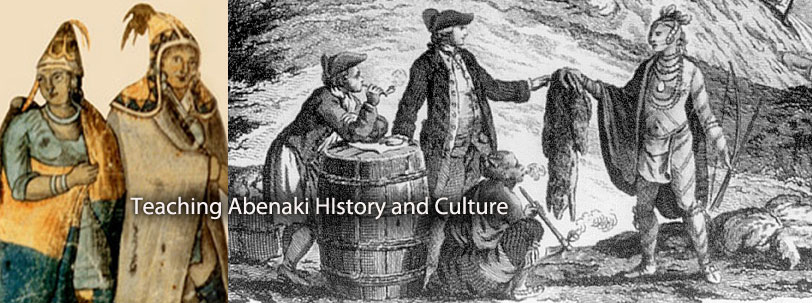| Topic/Title |
Abenaki History and Culture |
| Overview |
The purpose of this unit is to study the history and culture of the first people who inhabited and continue to live in Vermont and New Hampshire, the Abenaki. |
| Enduring Understandings |
- The Abenaki have lived in the area we now call Vermont and New Hampshire for at least 12,000 years.
- This area is the Abenaki homeland.
- There are many Abenaki place names in Vermont and New Hampshire.
- From first contact to the American Revolution, Abenakis and Europeans sometimes cooperated with each other and sometimes fought.
- European settlement of Vermont and New Hampshire increased continually and the Abenaki tried to maintain control of their lands.
- Europeans eventually prevailed over the Abenaki and took control of their lands.
- Today, the Abenaki have reasserted their identity as the longstanding inhabitants of Vermont and New Hampshire.
|
| Essential Questions |
- Why do groups of people come into conflict with each other?
- How are Native American and Euro-American cultures different?
|
| Focusing Questions |
- How was traditional Abenaki society organized and how did the Abenaki live?
- How is the landscape central to Abenaki culture, stories, and history?
- Why did the Abenaki and European and American settlers come into conflict?
- Why did Americans in Vermont and New Hampshire come to believe that the Abenaki had disappeared from these states?
- How do Abenaki people live today?
|
| Background Information |
- Why do groups of people come into conflict with each other?
- How are Native American and Euro-American cultures different?
|
| Bibliography |
Bibliography on Abenaki History and Culture |
| Content Grade Expectations for Vermont |
H&SS3-4:8 Students connect the past with the present by…
- Explaining differences between historic and present day objects in Vermont, and identifying how the use of the object and the object itself changed over time.
- Describing ways that life in the community and Vermont has both changed and stayed the same over time
- Examining how events, people, problems and ideas have shaped the community and Vermont.
|
H&SS3-4:11 Students interpret geography and solve geographic problems by…
- Observing, comparing, and analyzing patters of local and state land use to understand why particularlocations are used for certain human activities.
|
H&SS3-4:12 Students show understanding of human interaction with the environment over time by…
- Describing how people have changed the environment in Vermont for specific purposes.
- Recognizing patterns of voluntary and involuntary migration in Vermont.
|
H&SS3-4:13 Students analyze how and why cultures continue and change over time by…
- Identifying expressions of culture in Vermont by discovering how Abenaki oral tradition reflects and influences their society.
|
| Inquiry Grade Expectations for Vermont |
Students initiate an inquiry by:
Asking relevant and focusing questions based on what they have seen, what they have read, what they have listened to, and/or what they have researched. |
| New Hampshire Curriculum Framework: Social Studies |
| SS:GE:4:4.2: Describe the types and historical patterns of human migration |
| SS:HI:4:5.1: Explain the unique contributions of different ethnic and religious groups to New Hampshire history and culture |
Thanks to Steve Glazer of Poetics of Place, classroom teachers Marguerite Ames and Bridget Fariel, and Beth Hughes of Broadwing Design for assistance in designing this toolkit. |
